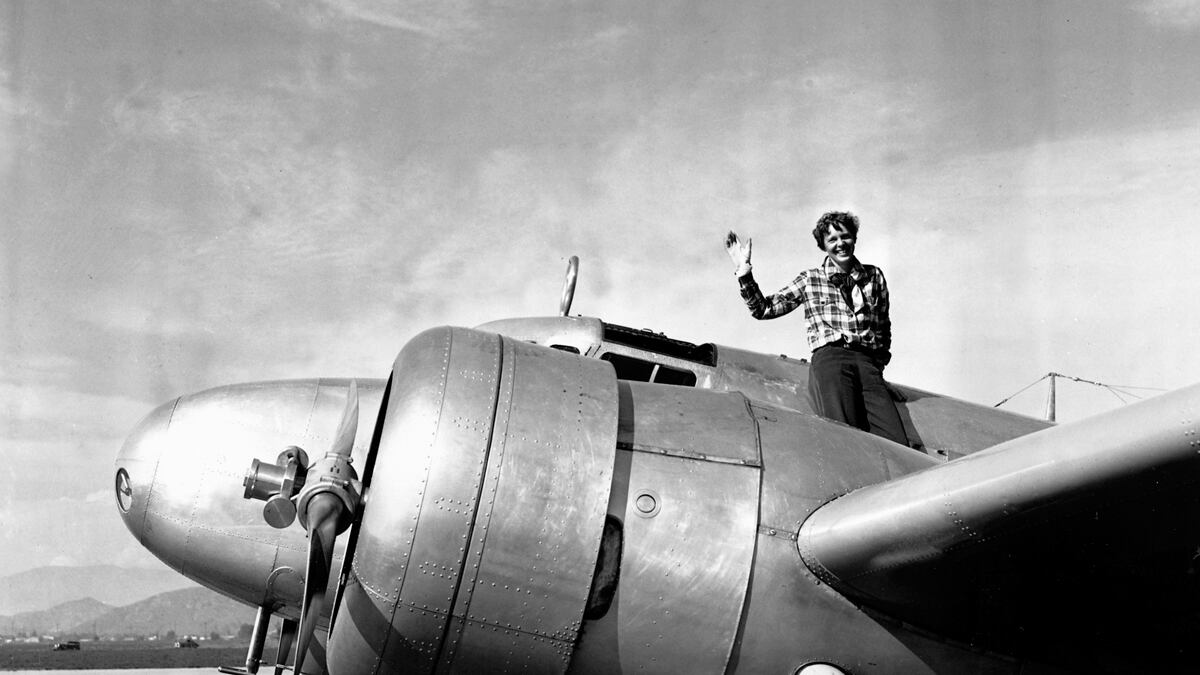As the quality of forensic evidence goes, shards from a jar of 1930s freckle ointment might seem a stretch—only plausible, perhaps, for Miss Marple as she noses around in the vicarage on the trail of an Agatha Christie murderer. But when it comes to solving the mystery of the disappearance of Amelia Earhart, so desperate is the urge to believe and so thin the material at hand that this fragment has been presented seriously and, no doubt, in good faith.
The last time Earhart’s voice was heard was at 8.43 a.m. on July 2, 1937. Running low on fuel, the celebrity pilot was trying to contact a U.S. Coast Guard cutter positioned near tiny Howland Island in the middle of the Pacific. After that moment one of the most tantalizing mysteries of aviation begins. For 75 years, since Earhart and her navigator, Fred Noonan, disappeared on an attempt to fly around the world, a steady drumbeat of theories, rumors, and fanciful speculation has kept the question aloft: what happened to Amelia?
Now members of an outfit called The International Group for Historic Aircraft Recovery, TIGHAR, at the onset of a three-day meeting in Washington D.C., have come up with what they believe is a convincing version of Earhart and Noonan’s fate.
It centers on a remote and uninhabited atoll called Nikumaroro Island, known as Gardner Island at the time of Earhart’s disappearance—some 350 miles south east of Howland Island where a runway had been prepared.
The most scientific-sounding part of this scenario concerns radio signals that might have been sent from Earhart’s Lockheed Electra. These transmissions, it is claimed, began around three hours after that last voice message from Earhart (the cutter could pick them up, but Earhart couldn’t receive the cutter’s replies).
Using modern technology, TIGHAR analyzed 120 reports of radio signals and has concluded that 57 are credible. In the past, other checks carried out on these signals identified Nikumaroro Island as one of several possible sources; TIGHAR is discounting all others.

For this to be credible, Earhart would have had to have landed on the atoll—and the Lockheed would have had to have remained high and dry for its radio equipment to remain working. (The more likely event, that Earhart did a wheels-up ditching in the sea, would have automatically destroyed the radio equipment.) One look at Nikumaroro—check it out on Google Earth—makes this seem like an extraordinary feat of piloting. It’s a typical coral atoll, a rocky reef looping around a basin with only a tiny appendage of flat surface.
Any pilot trying to get a fix on something so small and barely above sea level while making an approach under the stress of low fuel and with an airplane that was by no means forgiving or nimble would be taking a hell of a gamble. First, you would have to decide that the atoll was a viable option. Then you would have to align your approach without any of the normal navigation aids—not even a runway to target. The descent over water would need to be at a very shallow angle and finely judged to touch down precisely, leaving no margin for error. (Landing on an aircraft carrier would be a lot easier.) Earhart, despite her evident nerve, was no flying ace; she had crashed the same airplane during takeoff on Hawaii on an earlier test flight.
TIGHAR backs up its radio theory with a catalog of artifacts found at various times on the island, including a pocket knife similar to one owned by Earhart, and the broken pieces of a jar of Dr. Berry’s Freckle Ointment. OK, Earhart had freckles. And, apparently, wished she hadn’t. But would freckle treatment really have featured as a necessity to be carried on a flight where every ounce of weight had to be justified and, if not, discarded?
These devoted investigators are returning to Nikumaroro next month with deepwater search equipment. They hope to find the wreck of the Lockheed which, having perched on land for a few days, they believe was carried off by a tide and sank. I wish them luck. But I wouldn’t bet on it.






